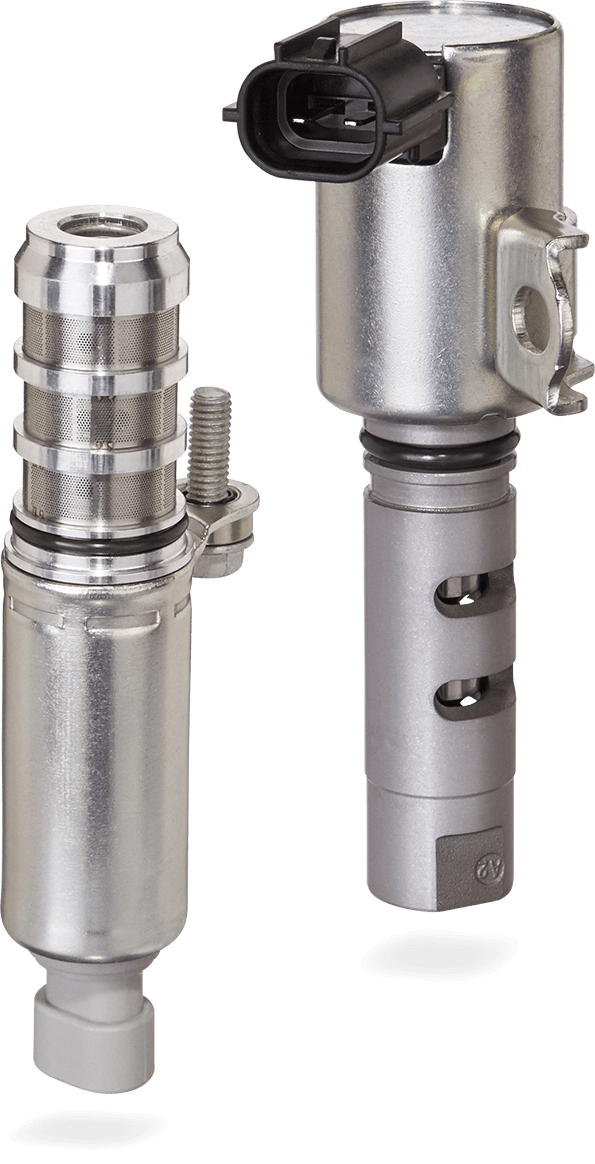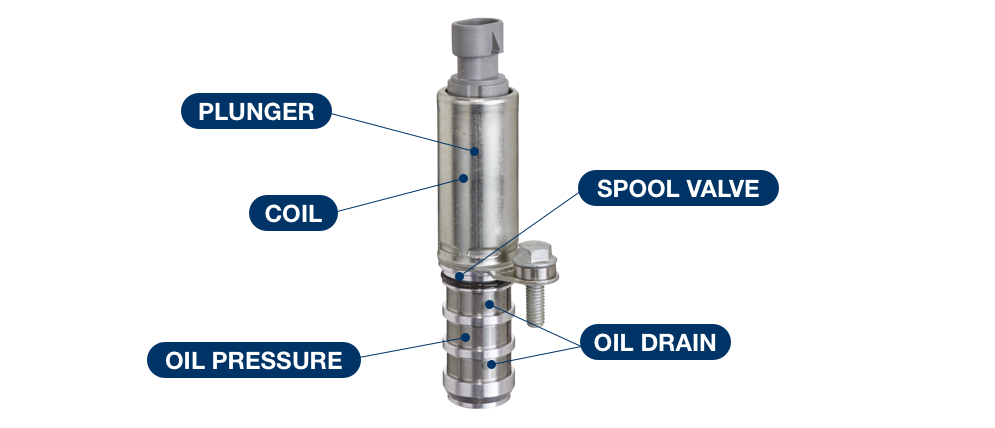Variable Valve Timing (VVT) Solenoid

The variable valve timing solenoid is a component of the variable valve timing system that manages the oil flow depending on the engine speed and load. A VVT solenoid in good working condition improves performance and fuel efficiency.
- Machined to precision tolerances preventing leakage, wear and seizing
- Corrosion-resistant solenoid enclosure and mounting brackets
- Rubber seals are compatible with today’s synthetic oils and blends
- The advanced technological design integrated into our solenoids helps restore engine performance and fuel economy
- Equipped with accessory packs to accommodate various original equipment models
- Meet or exceed OE specifications for fit, form and function

Other Manufacturer Terms for VVT Solenoid
Auto Manufacturers using VVT Solenoid
Pioneered by Nissan in the early 90s, Electronic Variable Valve Timing is now a near-universal feature on production cars in order to follow stricter emissions regulations.
The VVT technology may be commonplace, but many companies use different brand and patent names for the same system.
Many applications for the Spectra VVT Solenoid bear another original equipment name:
| Manufacturer | Acronym / Term | Definition |
|---|---|---|
| Audi | Valvelift | |
| BMW | VANOS | Variable Nockenwellensteuerung |
| Fiat | MultiAir | |
| Ford | Ti-VCT / VCT | Twin Independent Variable Camshaft Timing / Variable Camshaft Timing |
| General Motors | DCVCP | Double Continuous Variable Cam Phasing |
| Honda, Acura | VTEC, i-VTEC | Variable Valve Timing and Lift Electronic Control |
| Hyundai, Kia, Volvo | CVVT | Continuous Variable Valve Timing |
| Hyundai, Kia | VTVT | Variable Timing Valve Train |
| Mazda | S-VT | Sequential Valve Timing |
| Mitsubishi | MIVEC | Mitsubishi Innovative Valve timing Electronic Control system |
| Nissan, Infiniti | CVTCS / VVEL | Continuous Variable Valve Timing Control / Nissan Variable Valve Event and Lift |
| Nissan | N-VCT / VVL | Nissan Variable Cam Timing / Nissan Ecology Oriented Variable Valve Lift and Timing |
| Porsche | VarioCam | |
| Toyota, Lexus | VVT-i, VVTL-i | Variable Valve Timing with intelligence |
| Subaru | AVCS / AVLS | Active Valve Control System |
Part Components

How Does a VVT Solenoid Work?
- The VVT solenoid works with oil pressure, using directions from the ECU to alter rotation of the camshaft.
- The solenoid alters the oil flow in the conduit leading to the camshaft phaser(s).
- Conduits can be “instructed” to hasten or delay intake valve opening depending on which conduit will be called upon by the solenoid.
- Variation of the intake pressure will be used by the powertrain computer to optimize fuel delivery to the combustion chambers.
Common VVT Solenoid Failure Symptoms
- Rough Engine Idle
- Check Engine Light
- Misfiring engine under loads
Common Causes of Failure
Contaminants in the engine oil are the main cause of failure of the VVT system. A failing unit will lead to rough engine idle and low fuel economy. Failure to replace a dying unit may cause engine gear drive and timing chain failure. Always watch for that “check engine” light
